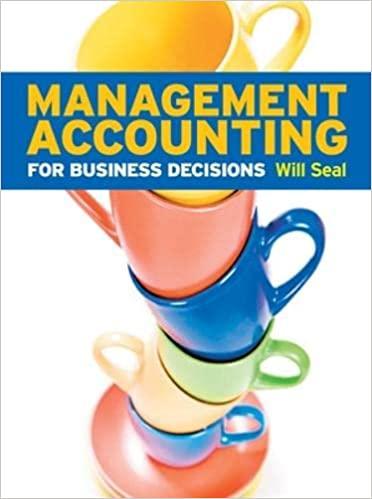P55 Plantwide and Departmental Overhead Rates Time allowed: 40 minutes Blast it! said David Wilson, CEO of
Question:
P5–5 Plantwide and Departmental Overhead Rates Time allowed: 40 minutes
‘Blast it!’ said David Wilson, CEO of Teledex Company. ‘We’ve just lost the bid on the Koopers job by €2,000. It seems we’re either too high to get the job or too low to make any money on half the jobs we bid.’
Teledex Company manufactures products to customers’ specifications and operates a job-order cost system. Manufacturing overhead cost is applied to jobs on the basis of direct labour cost. The following estimates were made at the beginning of the year:
 Jobs require varying amounts of work in the three departments. The Koopers job, for example, would have required manufacturing costs in the three departments as follows:
Jobs require varying amounts of work in the three departments. The Koopers job, for example, would have required manufacturing costs in the three departments as follows:
 The company uses a plantwide overhead rate to apply manufacturing overhead cost to jobs.
The company uses a plantwide overhead rate to apply manufacturing overhead cost to jobs.
Required 1 Assuming use of a plantwide overhead rate:
(a) Compute the rate for the current year.
(b) Determine the amount of manufacturing overhead cost that would have been applied to the Koopers job.
2 Suppose that instead of using a plantwide overhead rate, the company had used a separate predetermined overhead rate in each department. Under these conditions:
(a) Compute the rate for each department for the current year.
(b) Determine the amount of manufacturing overhead cost that would have been applied to the Koopers job.
3 Explain the difference between the manufacturing overhead that would have been applied using the plantwide rate in question 1
(b) above and using the departmental rates in question 2 (b).
4 Assume that it is customary in the industry to bid jobs at 150% of total manufacturing cost (direct materials, direct labour, and applied overhead).
What was the company’s bid price on the Koopers job? What would the bid price have been if departmental overhead rates had been used to apply overhead cost?
Step by Step Answer:







